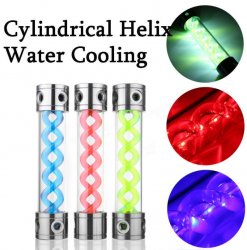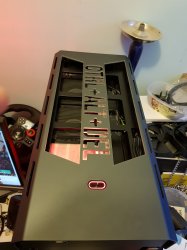People wanting to save money on coolant should be using the following:
distilled water
borax (cheap at WalMart in a box, make sure it's fully dissolved)
benzotriazole (available on Amazon for a reasonable price).
The borax raises and buffers the pH. Higher-than-neutral pH reduces corrosion. Too high a pH can be a scale corrosion issue but borax doesn't go that high. Benzotriazole is critical because it puts a thin protective layer on the metal surfaces, especially copper, that prevents oxide buildup and other corrosion. All serious copper coolants/preservative liquids use a triazole inhibitor. It's either benzotriazole or tolyltriazole. If you have aluminum in your loop you'll want a higher pH than with copper/nickle alone and would add molybdate as a corrosion inhibitor, in addition to the triazole.
Beyond those things a biocide might be considered. Silver is actually less of an issue with nickle than it is with some solders, an issue rarely brought up. So it's the solder that holds the radiator together that would disintegrate over time. This happened to one enthusiast who put a blog article up about it. He said he had used distilled with silver for many years without issue until he discovered that his radiator had started leaking. The solder had disintegrated. Silver may also not be the only cause of nickle plating flaking. That could be biological corrosion causing the nickle layers to lift off, although the addition of silver as a corrosive element could exacerbate the issue. Silver is most effective as a biocide when there are chlorine ions in the water. Without those its effectiveness may not be so good.
The biocide, of course, needs to be compatible with triazole. Iodine, which was used in the past by some enthusiasts, not only reduces the effectiveness of silver, it reduces the effectiveness of triazole unless it is potassium iodide at exactly a ratio of .1M benzotriazole and .01M potassium iodide.
The only liquid one study tested that had no corrosion was .1M BTA and .01M AMT in ethanol, not distilled. Distilled with those two compounds, though, offered second-best protection. The study didn't look at using glycols because glycols are mainly useful in terms of below-freezing coolant applications. The study was about copper/bronze artifact preservation. But, the interesting thing is that distilled water, even with two inhibitors, did not fully stop corrosion. It took ethanol as base liquid to stop it, with the inhibitors.
Speaking of compatibility... Silver is not compatible with triazole inhibitors. It bonds with them, making both the silver and the triazole ineffective. If you're going to rely on silver as a biocide you need to find an anti-corrosion chemical that's compatible with it. One option is glycol. Glycol, though, has to be used as a concentration greater than 20%. Anything less makes it susceptible to breakdown. If you use a 25% concentration of propylene glycol to go with your silver you'll still want to introduce the correct chlorine compound so the silver can react with it and form the anti-biological silver-chlorine compound (make sure that chlorine compound is compatible with all of the equipment the water mix will touch). Ethylene glycol, which is toxic, unlike propylene, does have a vapor pressure and will evaporate slowly if exposed to air. Heat and water movement increase the evaporation rate.
Glycols are used with triazole inhibitors in commercial/serious solutions at all times as far as I know. It may be possible to use 25% ethylene glycol without silver or any other biocidal element. I don't think it works for propylene but I think a >20% ethylene glycol concentration is enough to inhibit biological growth, especially with a >7 pH (borate buffer added). As for skipping the triazole in favor of silver, my assumption is that it would be better to skip the silver and use the triazole since that's what all the commercial glycols do. Triazole bonds at the surface level with copper to inhibit corrosion, something glycols can't do. With a suitable biocide it may be possible to use glycol at a concentration below 20% but an expert warned against using less than 20% and I've seen that opinion elsewhere in scientific/industrial literature. <20% glycol makes the glycol prone to biological activity and disintegration.
Triazoles are highly stable so they should never be flushed into water systems. You should also use a mask and gloves when handling triazole because it is somewhat toxic. Old coolant should be evaporated and then the residue should be disposed of correctly. That's another reason to not use glycol, especially ethylene glycol, with triazoles. Both resist evaporation and you don't want to leave ethylene glycol sitting around to evaporate into your air. Benzotriazole has been found to resist breakdown in the environment but a lot of ignorant people pour antifreeze into drains.











